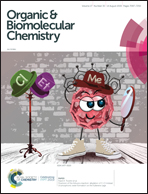A highly efficient Baby Spinach-based minimal modified sensor (BSMS) for nucleic acid analysis†
Abstract
Molecular recognition between nucleic acids has proven to be a powerful tool for designing hybridization probes for the detection of DNA and RNA sequences. Most detection probes rely on the conjugation of small molecule dyes to nucleic acids for fluorescence output, which is not cost-effective and also limits their applications in vivo, as they are not genetically encodable. More affordable sensors devoid of any chemical labeling are needed that show high fluorescence output and are genetically encodable. Here, we have designed a label-free Baby Spinach-based minimal modified sensor (BSMS) for the analysis of nucleic acids. The minimal modification in the sensor design reduces the complexity of the design, and provides additional stabilization after binding the target nucleic acids, leading to a high fluorescence output. BSMS is able to detect both DNA and RNA of potentially any lengths and is based on a Baby Spinach aptamer that binds and enhances the fluorescence of a small molecule dye. BSMS shows specificity towards its analyte in the presence of other sequences and selectively differentiates between closely related sequences. BSMS comprises genetically encodable unmodified RNA and has been shown to function at ambient temperature, and thus is anticipated to provide nucleic acid monitoring in vivo.

- This article is part of the themed collection: Chemical Biology in OBC


 Please wait while we load your content...
Please wait while we load your content...